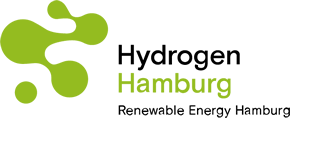Details
New Hamburg hydrogen network sets new standards Interview with Oliver Koch, Gasnetz Hamburg
In the following talk, Oliver Koch, who works in the hydrogen sector at Gasnetz Hamburg, explains the goals of his company.

In the following talk, Oliver Koch, who works in the hydrogen sector at Gasnetz Hamburg, explains the goals of his company.
Renewable Energy Hamburg: Gasnetz Hamburg will implement the Hamburg hydrogen industry network HH-WIN over the coming years – what exactly does this mean? When can we expect the network to be ready? Who will use it?
Oliver Koch: ‘Hamburg’s energy-intensive industries are looking for solutions to decarbonise their production. One solution can be found in the plans for a “Hamburg Hydrogen Industry Network”, HH-WIN for short: a hydrogen network south of the river Elbe, which will initially be around 60 kilometres long, will be able to supply a large number of manufacturing companies with green hydrogen – a reliable H2 infrastructure in the German and European region.
In the first expansion stage, which will last until 2030, there will be an opportunity for the network area to connect manufacturing companies that today account for around a third of Hamburg’s total natural gas consumption. This presents huge potential for climate protection.
Gasnetz Hamburg is part of the Hamburg Hydrogen Network, which has set itself the goal of saving more than one million tons of CO2 by 2030. The companies Airbus, ArcelorMittal, GreenPlug, Hamburger Hafen und Logistik AG, Hamburg Port Authority, HADAG Seetouristik und Fährdienst, Stadtreinigung and the Hamburg Green Hydrogen Hub (Shell, Vattenfall, Mitsubishi Heavy Industries and Wärme Hamburg) are involved in a joint proposal as part of the EU-wide funding programme ‘Important Projects of Common European Interest’ (IPCEI).
Renewable Energy Hamburg: The HH-WIN hydrogen infrastructure is the central link between all joint projects. What are the biggest (technical) challenges in setting up a new hydrogen network in Hamburg?
Oliver Koch: ‘To begin with, the HH-WIN project will be developed and implemented in needs-based stages from 2023 to 2030. From 2023 to 2026, the focus will be on two milestones:
- The distribution of locally generated hydrogen from a scalable major electrolysis system (initially up to 100 MWel), and of imported hydrogen to users in the port area.
- Establishing a pan-European hydrogen infrastructure to major hydrogen production centres via the connection to the German hydrogen network, with a continuous connection to Denmark and the Netherlands.
Subsequently, HH-WIN is to be expanded further in order to serve additional requirements from the industrial and transport sectors. The challenge lies less in the technical implementation, since a hydrogen pipeline generally does not entail any greater risks than a natural gas pipeline, but rather in the needs-based planning and implementation for the customer.’
Renewable Energy Hamburg: Are there other (European) cities that have implemented a hydrogen network and that you can use as a model?
Oliver Koch: ‘As far as we know, the plan for a public hydrogen network for industry and commerce in urban areas is the first concrete step in Germany towards building an integrated urban hydrogen infrastructure of this size at the level of a gas distribution network. But we are in contact with comparable projects in Europe. However, these are also still in planning or under construction.’
Renewable Energy Hamburg: You will appear as a speaker at this year’s Powerfuels Conference, which dena and EEHH are organising together. How can a company like Gasnetz Hamburg benefit from a Global Powerfuels Alliance?
Oliver Koch: ‘The HH-WIN hydrogen infrastructure is a central link for manufacturing companies. At the same time, it also offers ideal connection options for H2 mobility: fuel stations for heavy goods traffic and for vehicles and ships in port logistics can be connected directly to the planned hydrogen infrastructure. The seaward import and connection to the European hydrogen network also offer potential for the use of other power fuels in addition to hydrogen, such as synthetic gases or, for example, synthetic methanol and ammonia.’
Thank you for your time and interesting answers!

